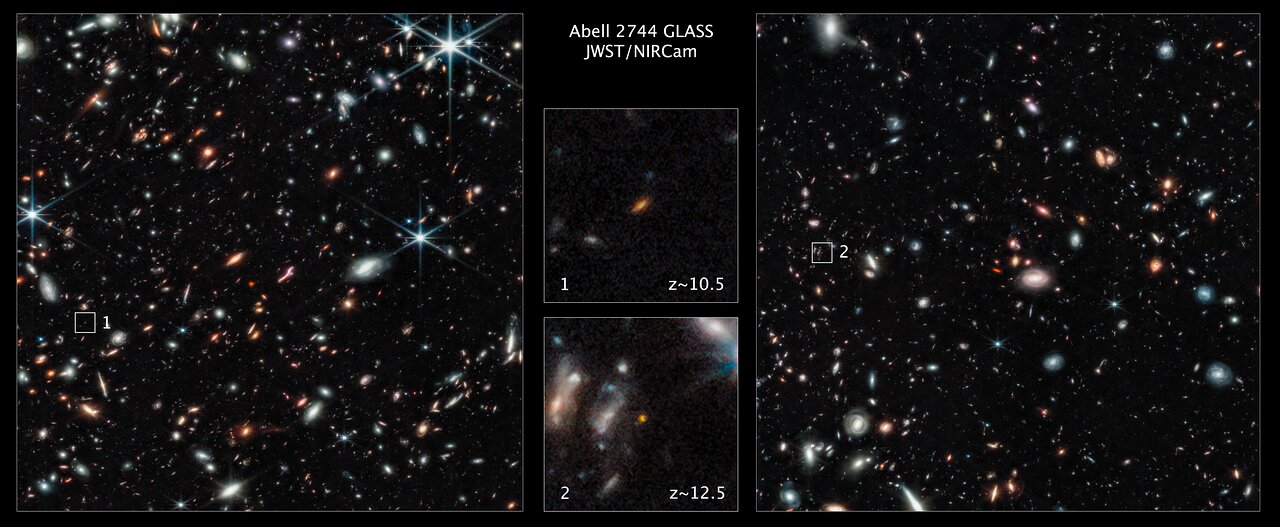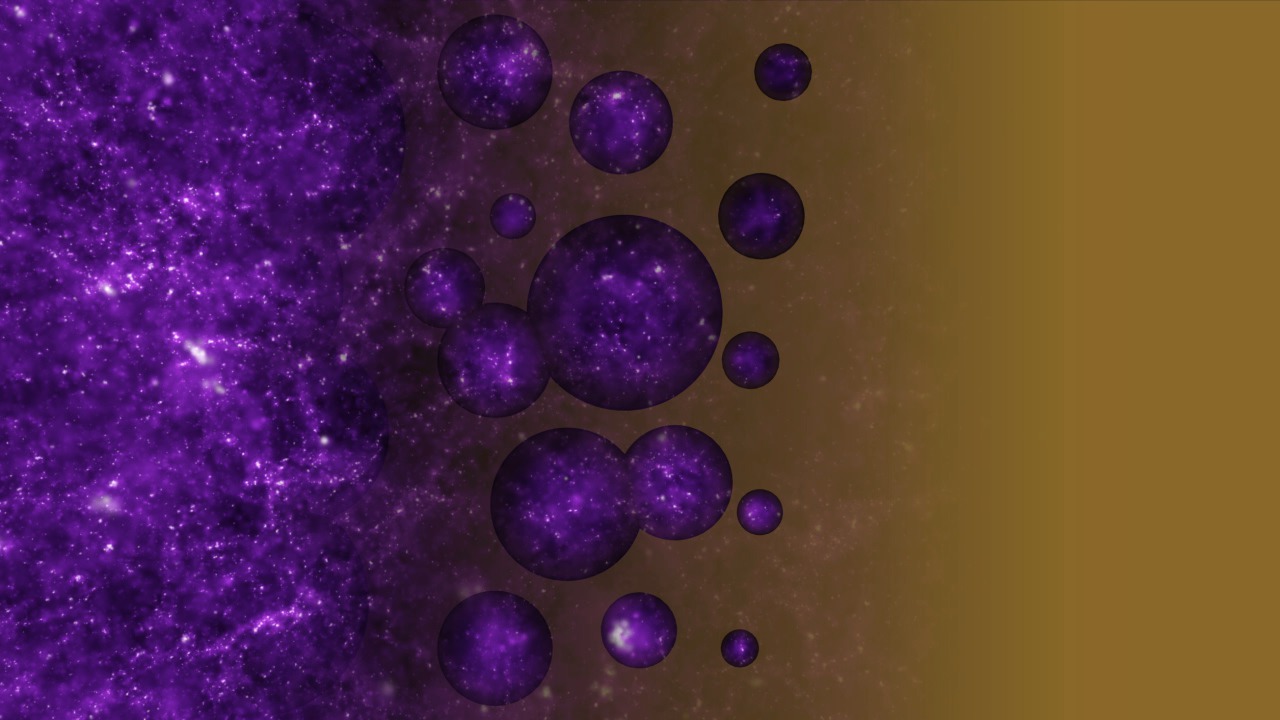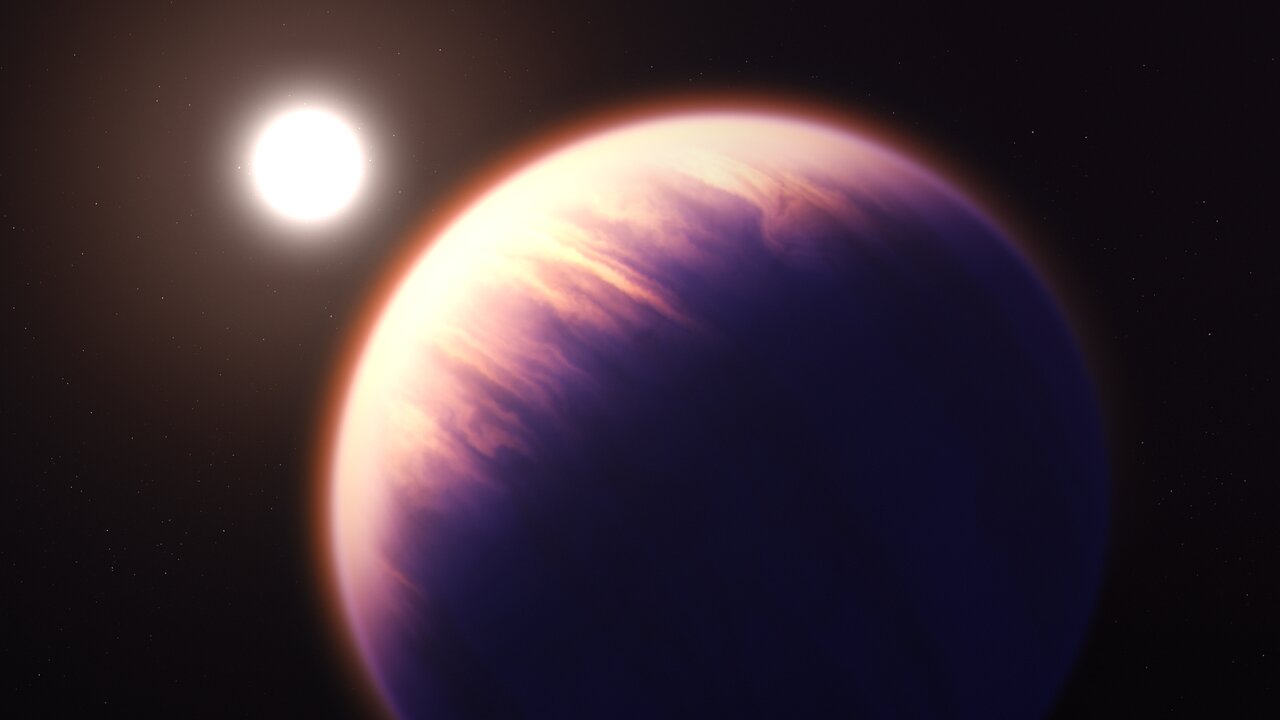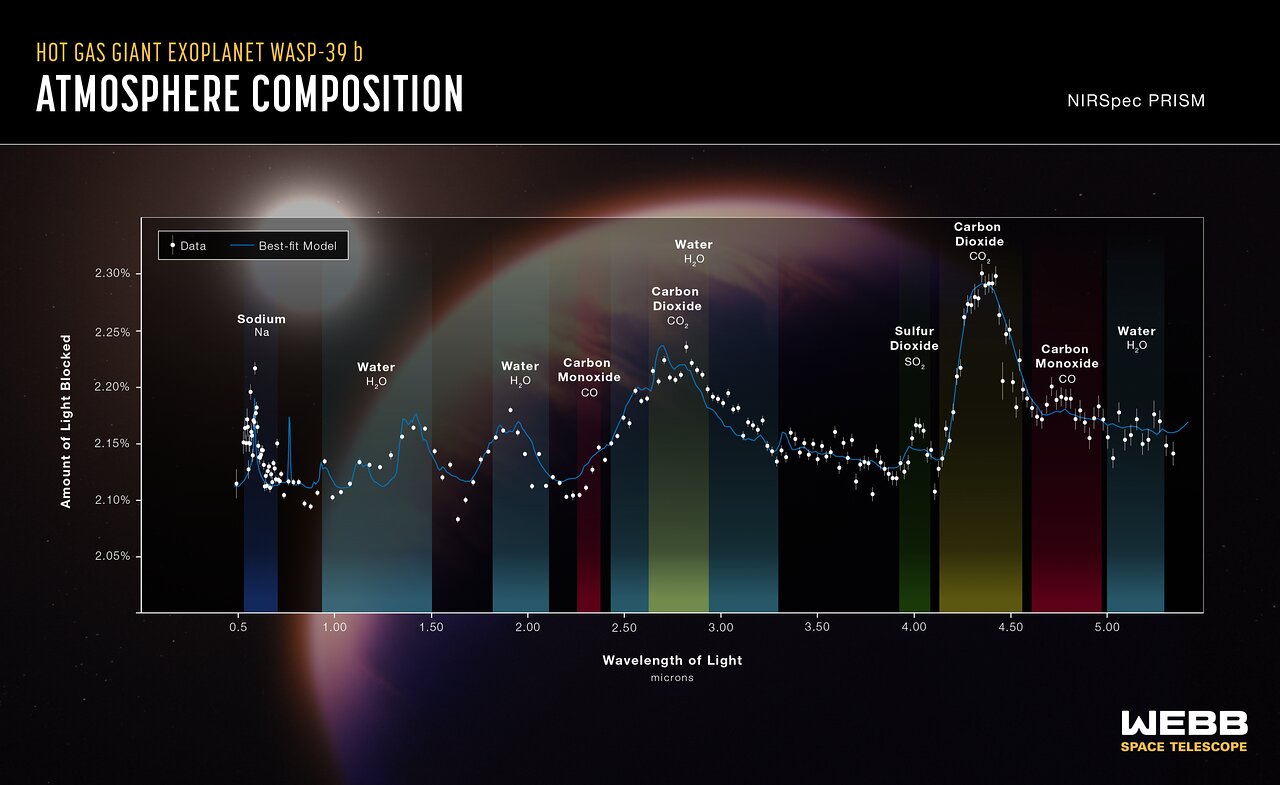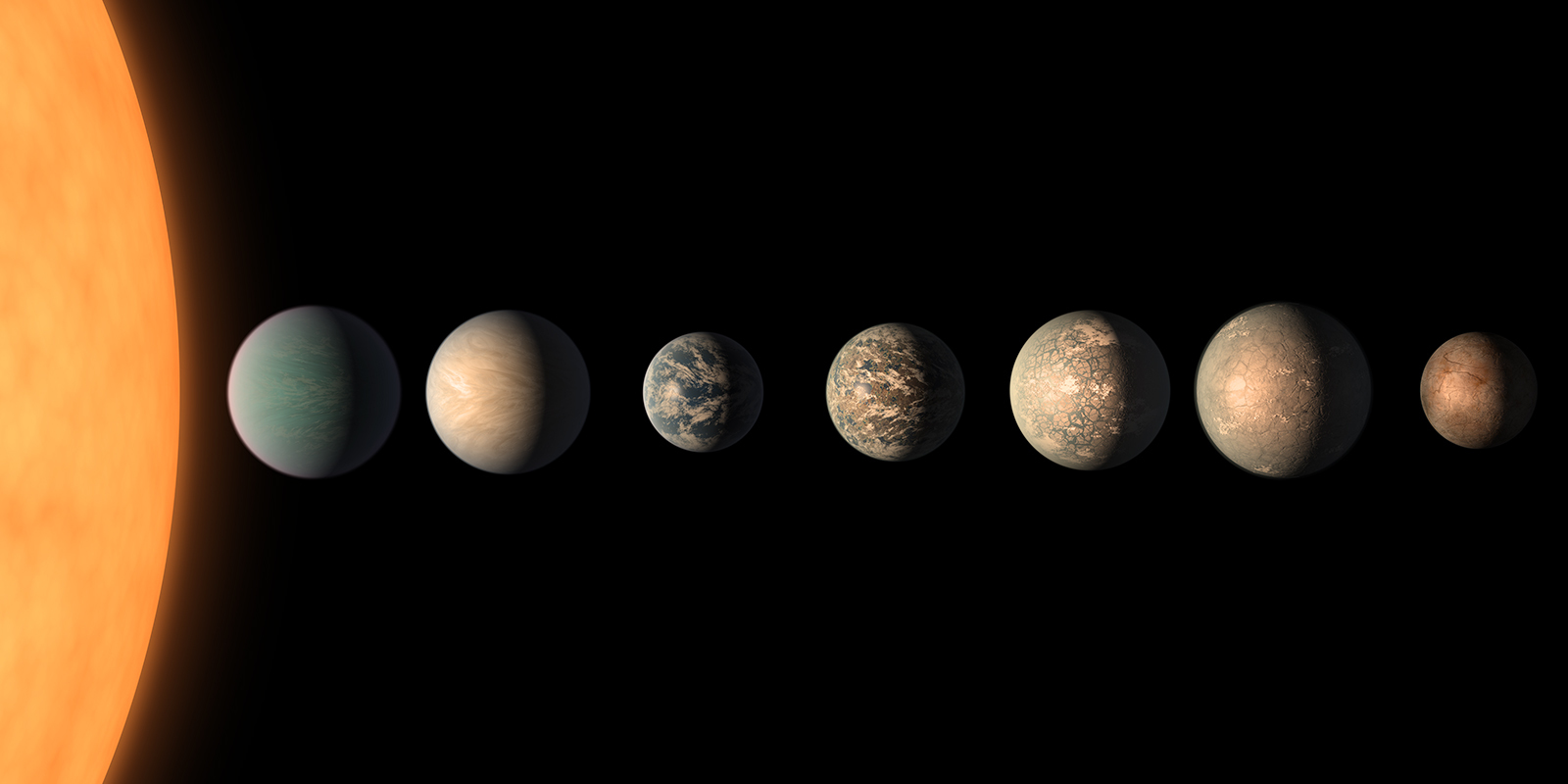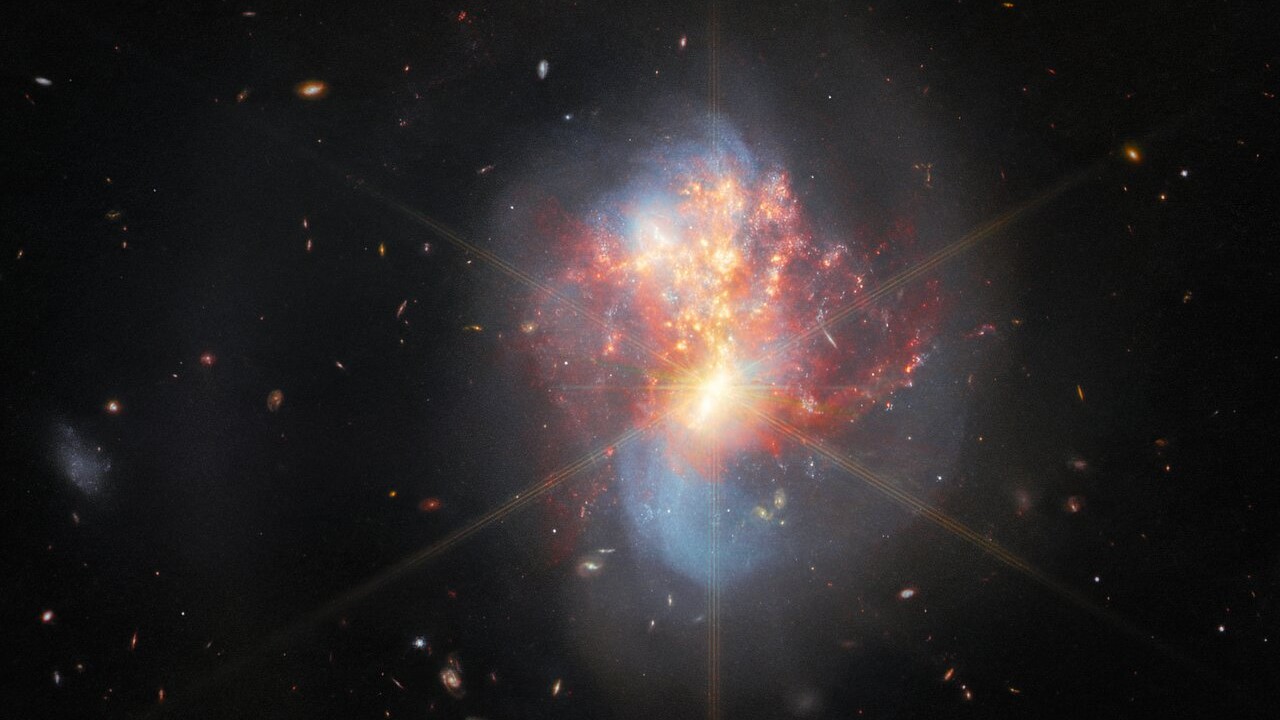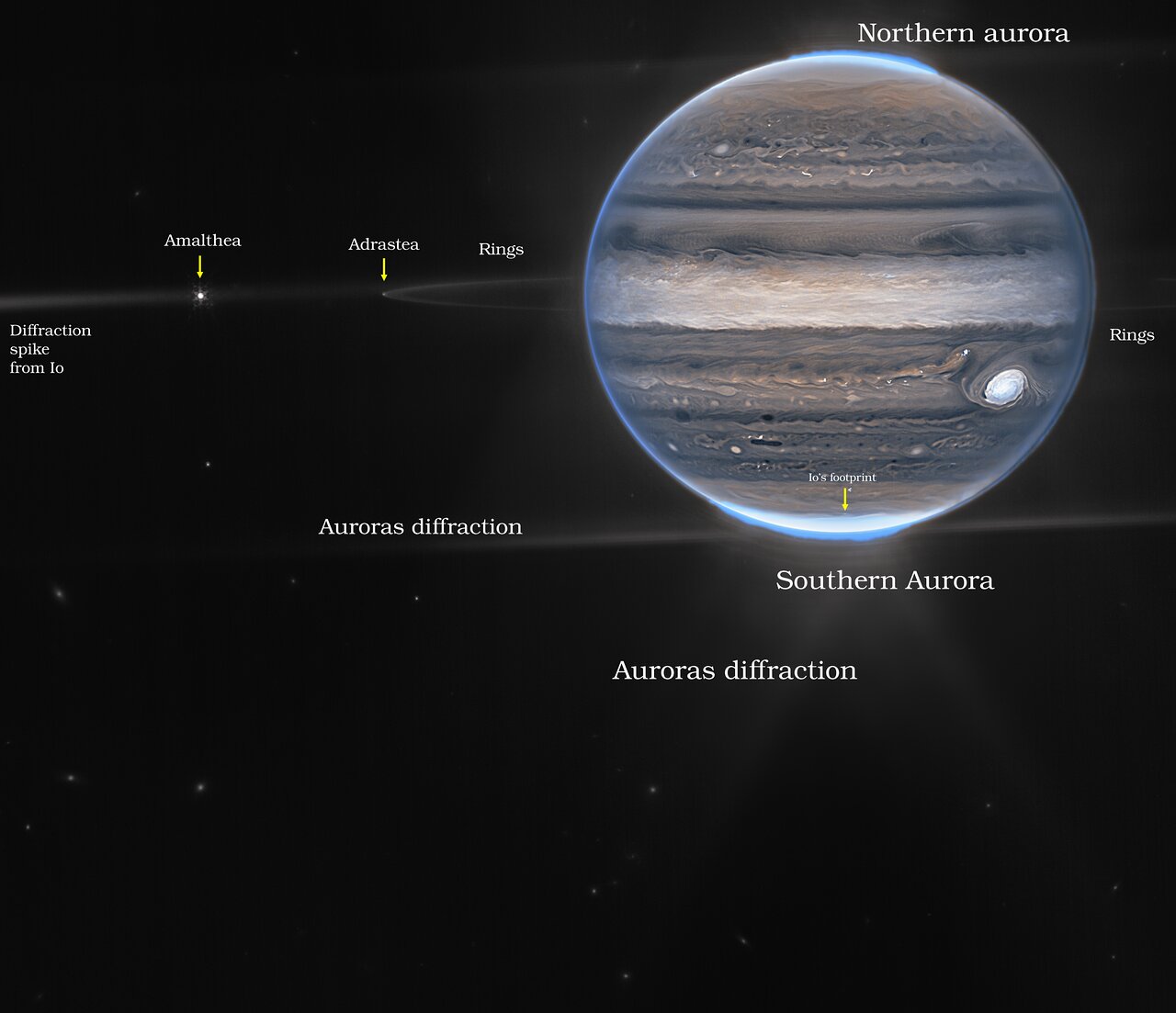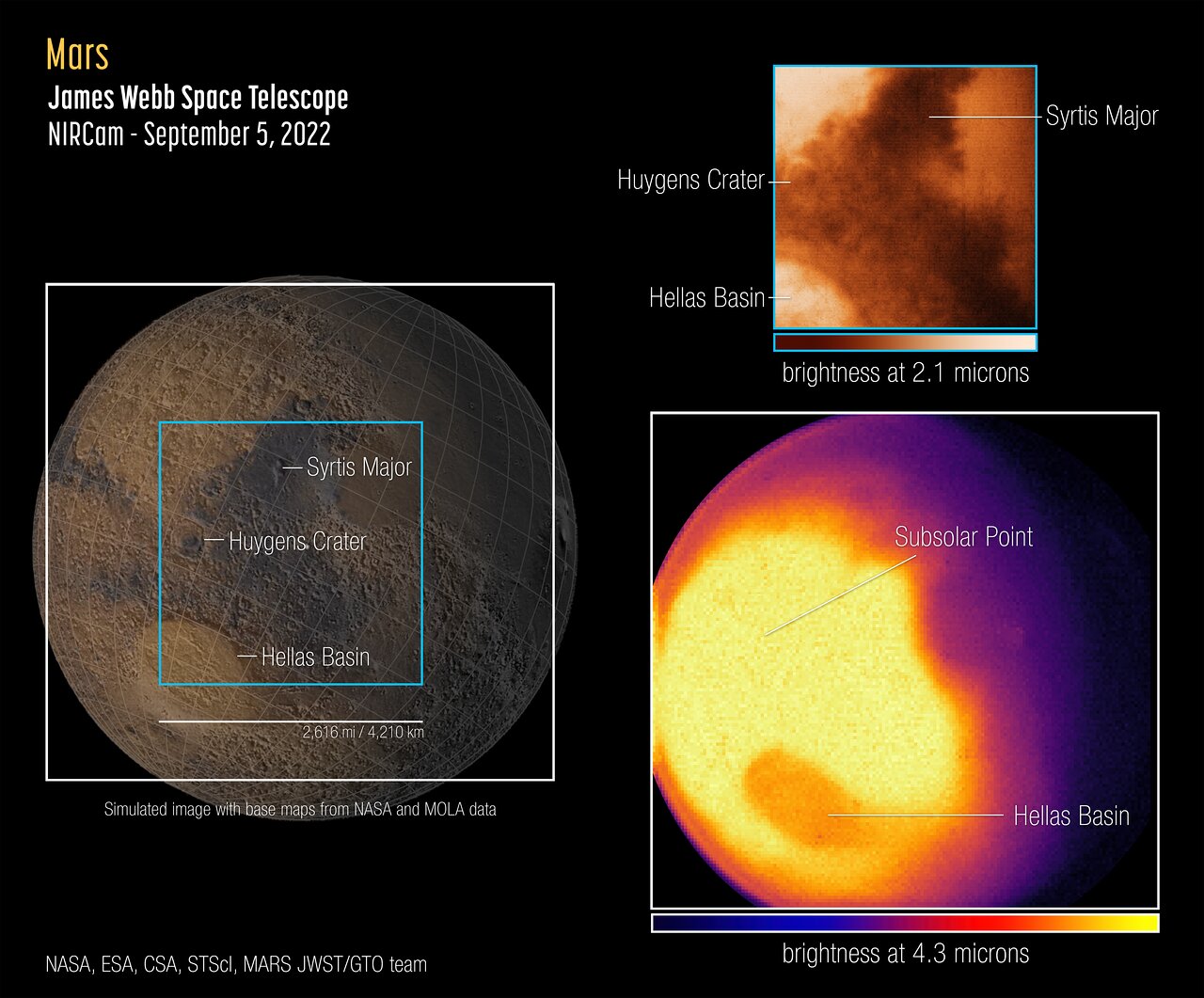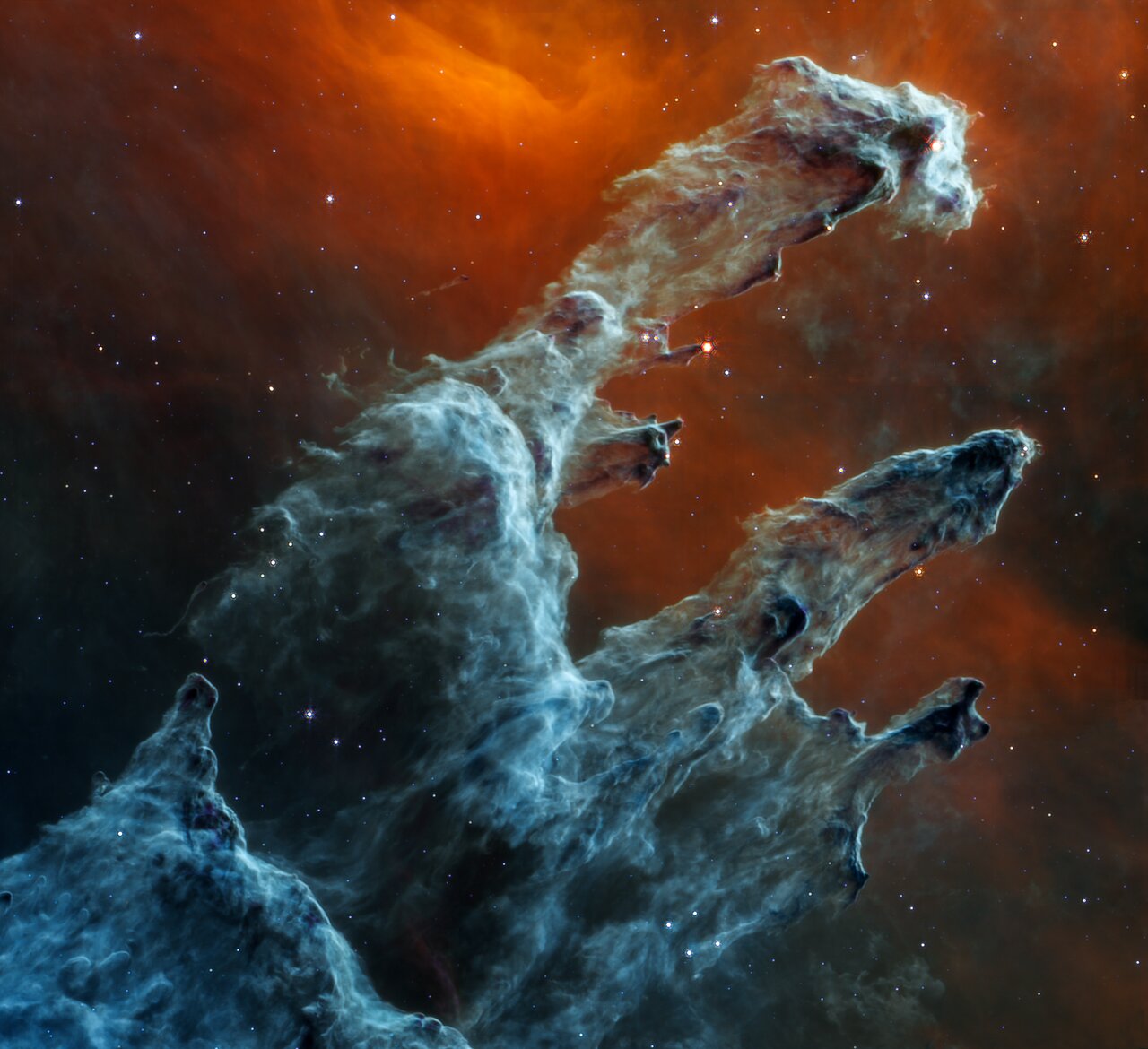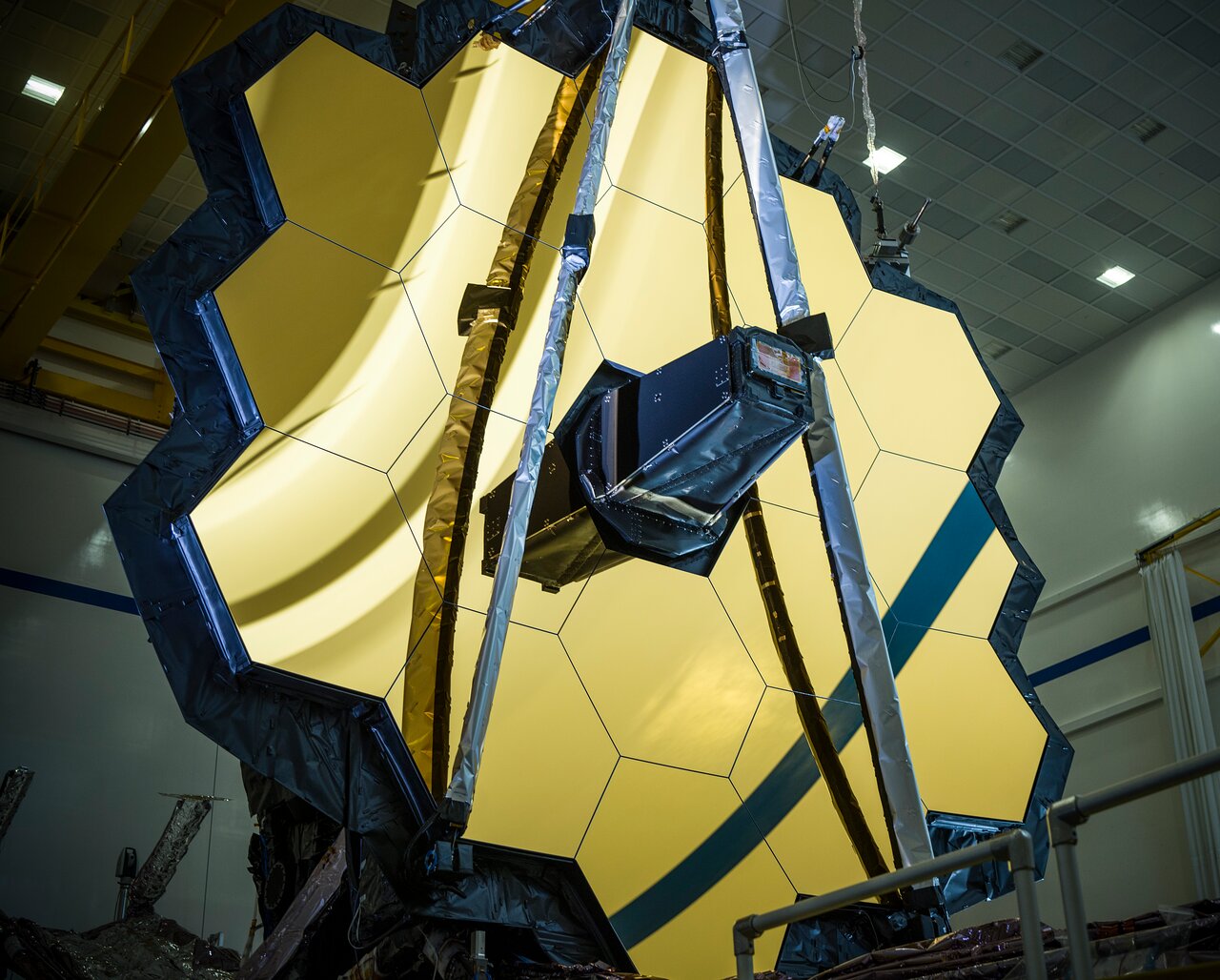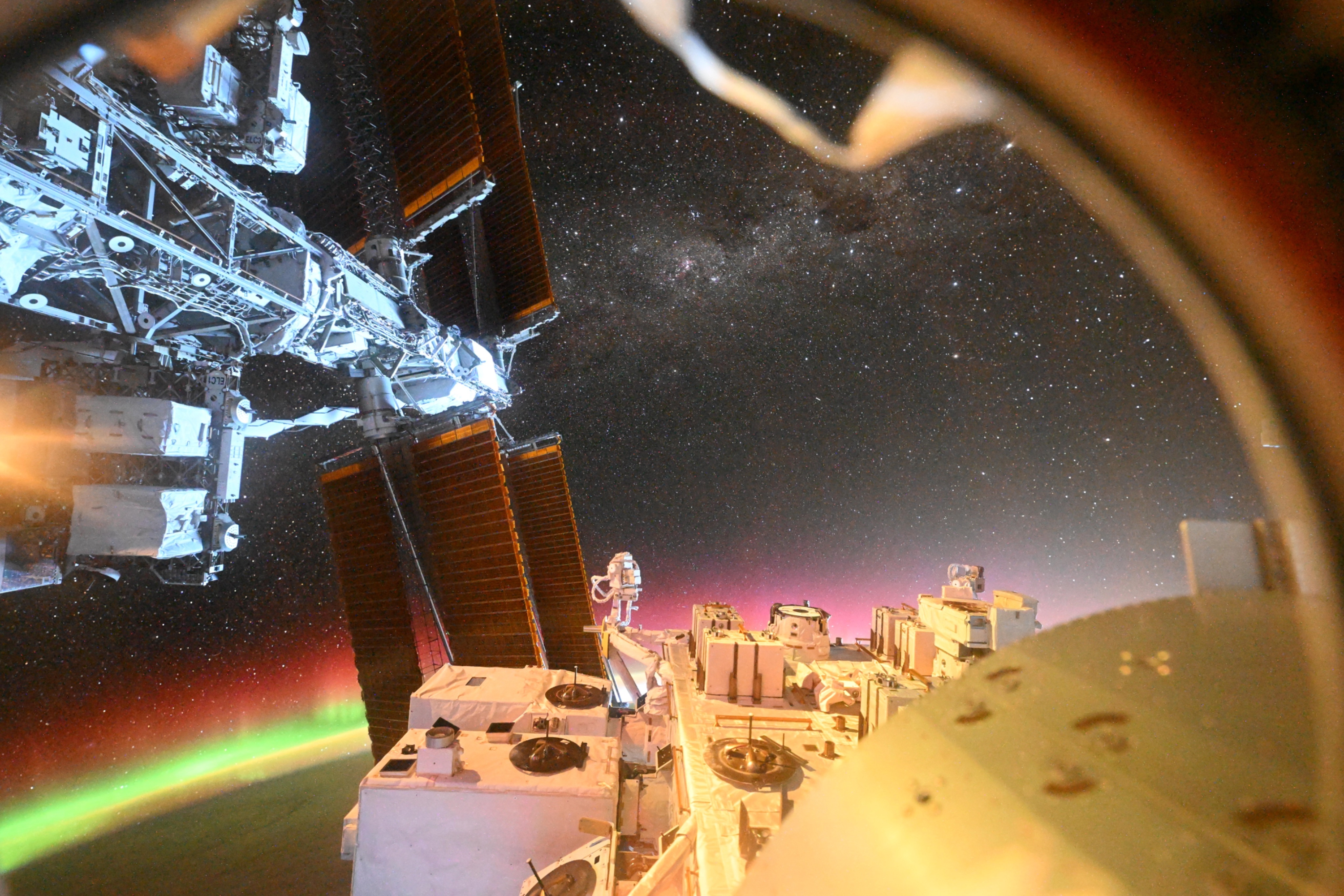8 ways the James Webb Space Telescope is already revolutionizing astronomy
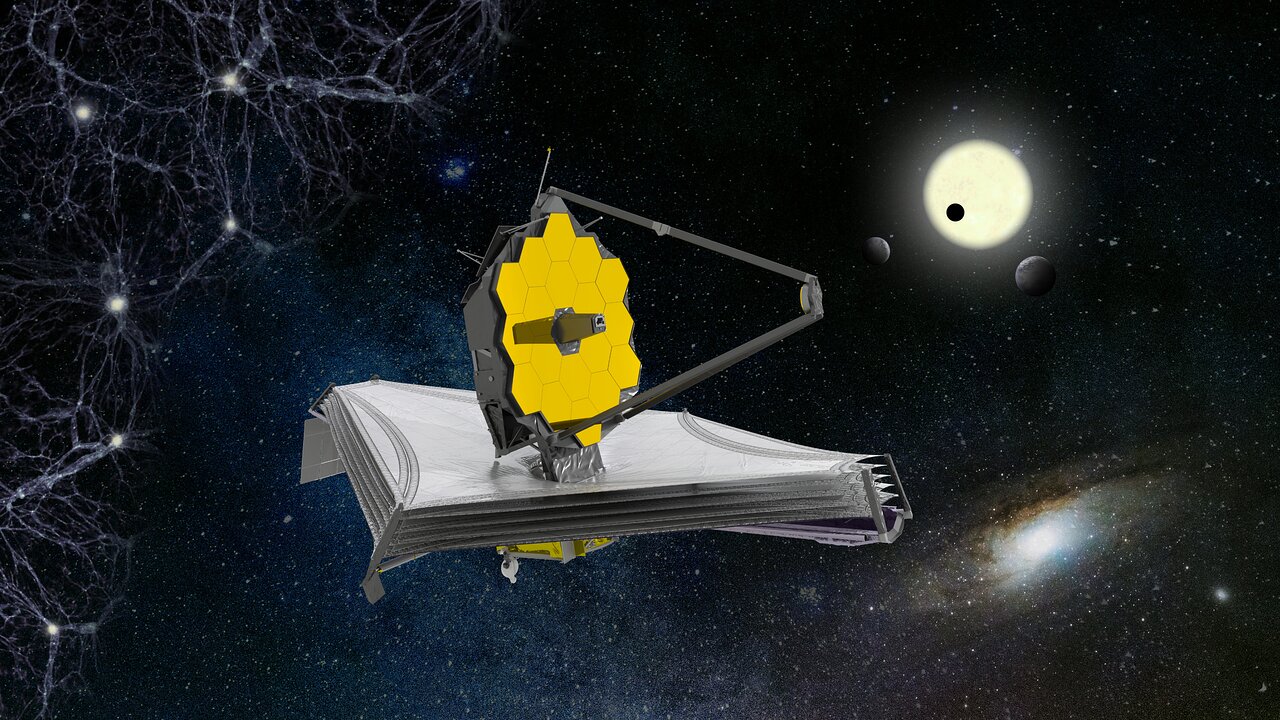
It's been almost a year since the most ambitious — and costly — space telescope ever built was launched toward the L2 Lagrange point on the far side of the Earth from the sun.
Following a nerve-shredding deployment that saw its mirrors and sunshield successfully unfold while navigating 344 potential points of failure, the $10 billion James Webb Space Telescope (Webb or JWST) has been churning out fantastic astronomical data since the summer.
Even less than six months into observations, this data is transformative, and scientists have already used it to make several important and record-breaking discoveries. JWST was heralded as a revolutionary telescope before it launched; now that it is in business, we look at some of the many ways that it is already succeeding in transforming astronomy.
1. Seeing farther into the past than ever before
To see the precious rare photons from the most distant galaxies in the universe, the bigger the telescope, the better — and space telescopes don't come bigger than JWST, with its 21-foot (6.5 meters) primary mirror.
But that's only half the job done, because the more distant an object is, the more its light is redshifted. The farther a galaxy is from us, the faster it is receding from us because of the expansion of the universe, so the more its light becomes stretched, shifting the light toward redder wavelengths.
The most distant galaxies, which are also the earliest galaxies we can see, emit light that is shifted all the way into near-infrared wavelengths by the time it reaches Earth. It's this redshift that prompted scientists to design JWST to specialize in near- and mid-infrared light.
The combination of the large mirror and infrared vision has enabled JWST to see more distant, earlier galaxies than astronomers ever have before, promising to transform our understanding how these galaxies form.
Breaking space news, the latest updates on rocket launches, skywatching events and more!
Prior to JWST's launch, the most distant known galaxy was one called GN-z11. It has a redshift of 11.1, which corresponds to seeing the galaxy as it was 13.4 billion years ago, just 400 million years after the Big Bang. That was the absolute limit of what telescopes before JWST could detect.
But very soon after the first data from JWST was released, that record was smashed. Astronomers took advantage of foreground galaxy clusters like Abell 2744 that act as gravitational lenses: Objects of great mass, such as galaxy clusters, warp space with their gravity, creating a magnifying lens-like effect that amplifies light from more distant objects. Astronomers began finding faint, red smudges in the background of these lenses — and these smudges have turned out to be the most distant galaxies ever seen.
First was a galaxy at a redshift of 12.5, called GLASS-z12 (GLASS is the name of a specific survey program, the "Grism Lens-Amplified Survey from Space"). We see this galaxy as it existed 13.45 billion years ago, or 350 million years after the Big Bang, astronomers calculated.
Galaxies with even greater redshifts soon followed. One, nicknamed Maisie's Galaxy, is seen as it existed just 280 million years after the Big Bang, at a redshift of 14.3, while another, at redshift 16.7, is seen just 250 million years after the Big Bang. There have even been claims for a galaxy at an astounding redshift of 20, which if confirmed would have existed just 200 million years after the Big Bang.
JWST is also working to confirm these finds as well, using a second instrument to split light by wavelength. Astronomers have already confirmed a galaxy with a redshift of 13.2, which we see as it was when the universe was just 325 million years old.
2. Discovering what lit up the universe
Following the Big Bang, but before stars and galaxies had formed, the universe was dark and shrouded in a fog of neutral hydrogen gas. Ultimately light, particularly ultraviolet radiation, ionized that fog. But where did that light initially come from to end the cosmic dark ages?
Astronomers believe that light came either from young galaxies filled with stars, or from active supermassive black holes, which are surrounded by accretion disks of brilliantly hot gas and shoot powerful jets into space. The question of which came first — galaxies or their black holes — is one of the biggest conundrums in cosmology, a kind of chicken or egg question.
Already, JWST has found that the early galaxies it is detecting are brighter and more structured than expected, with distinct disks around bulbous cores already filled with stars. This characteristic suggests that fully-formed galaxies were on the scene quickly — but whether they already contained supermassive black holes remains to be seen. Fortunately, JWST is designed to answer this question, and when it does it will provide a huge piece of the jigsaw that is the puzzle of the early universe.
3. JWST measures exoplanet atmosphere
Astronomers have now found more than 5,000 exoplanets and counting, but despite this remarkable haul, we still know next to nothing about many of them. JWST isn't designed to discover new exoplanets, but it does aim to paint much more detailed pictures of known worlds by conducting something called transit spectroscopy.
When a planet passes in front of its star, some of the star's light filters through the planet's atmosphere, and molecules in the atmosphere can absorb some of that starlight, creating dark lines in the star's spectrum, a barcode-like breakdown of light by wavelength. Knowing what's in a planet's atmosphere, or even whether it has an atmosphere at all, can teach astronomers about how a planet might have formed and evolved, what its conditions are like and what chemical processes are taking place in that atmosphere.
Early results have been hugely encouraging. In August, astronomers announced that JWST had made the first confirmed detection of carbon dioxide gas in the atmosphere of an exoplanet, in this case WASP-39b, which is 700 light years-away. Later, in November, astronomers released a more complete spectrum showing the absorption lines of elements and molecules in WASP-39b's atmosphere, including not only carbon dioxide but also carbon monoxide, potassium, sodium, sulfur dioxide and water vapor.
The findings were described as the most detailed analysis of an exoplanet's atmosphere yet.
The spectrum showed that there was a lot more oxygen in the planet's atmosphere than carbon, as well as an abundance of sulfur. Scientists think that sulfur must have come from numerous collisions that WASP-39b experienced with smaller planetesimals when it was forming, giving us clues to the planet's evolution that could also hint at how the gas giants in our own solar system, Jupiter and Saturn, formed. In addition, the existence of sulfur dioxide is the first example of a product of photochemistry on a planet beyond the solar system, since the compound forms when a star's ultraviolet light reacts with molecules in a planetary atmosphere.
4. Webb searches for hints of life and habitability
Studies of planets such as WASP-39b are one thing, but one of the holy grails of exoplanet science is to find another planet that is habitable, like Earth, and JWST is well positioned to characterize alien worlds.
The aforementioned observations of WASP-39b bode well for forthcoming studies of the planets of the TRAPPIST-1 system of seven rocky planets orbiting a red dwarf star located 40.7 light-years away from Earth. Four of these worlds lie in the star's putative habitable zone, where temperatures would permit liquid water to persist on the surface; given the right conditions they could potentially be habitable to varying degrees.
Initial observations with JWST are focusing on TRAPPIST-1c, which is the easiest to observe. Models predict that it will have an atmosphere similar to Venus, with lots of carbon dioxide. While TRAPPIST-1c is likely too hot to be habitable, determining whether it has an atmosphere and, if so, whether that atmosphere possesses carbon dioxide will be a big step toward characterizing Earth-size worlds. It will also be a big task, requiring 100 hours of observing time with JWST, which is tackling about 10,000 hours of observations during its first year of science.
From TRAPPIST-1c, things could become more ambitious, with JWST targeting the other worlds in the TRAPPIST-1 system that are more likely to be habitable, as well as similar worlds around other nearby stars. Astronomers will be on the lookout for biosignatures, such as the presence of both methane and oxygen in an atmosphere. The discovery of photochemical reactions in WASP-39b's atmosphere is also an important step, since photochemical reactions drive the formation of the carbon-based molecular building blocks of life.
5. JWST studies cosmic chemistry and galaxy evolution
Some stars live for billions upon billions of years, but others exist for just a short time before either exploding in a supernova or expanding to become a red giant that then puffs off its outer layers into deep space. In both situations, the stars disperse large amounts of cosmic dust formed from elements heavier than hydrogen and helium across space.
It turns out that there is a relationship between a galaxy's mass, its star-formation rate and its chemical abundances. Deviations from this relationship at high redshift might indicate that galaxies evolved differently in the early universe. Prior to JWST, astronomers could only reliably measure the abundances of various elements in galaxies up to a redshift of 3.3; in other words, galaxies that existed about 11.5 billion years ago. But how abundant these heavy elements were in galaxies earlier than this is a bit of a mystery, and fertile ground for JWST to really revolutionize our understanding.
Early results from JWST have shown that the relationship between star formation and mass does hold for galaxies at redshifts as high as 8, but that their abundance of heavier elements is three times lower than expected. This discrepancy suggests that stars and galaxies formed more quickly than we realized, before enough generations of stars had the chance to die out and disperse their elements into the cosmos.
6. JWST sets its sights on the solar system
Although JWST was designed to probe deep space, it can also be used to observe our nearest neighbors, and the results have been pleasantly surprising.
Astronomers were not sure what to expect when JWST pointed at Jupiter because of how fast it moves and how bright the planet is compared to the faint distant galaxies JWST usually observes. Scientists worried that Jupiter might overload JWST's sensitive detectors or wipe out fainter features with its glare, but the results were better than could be imagined. JWST's images showed Jupiter's faint rings and some of its small moons, as well as the planet's atmospheric bands and auroras.
By observing in near- and mid-infrared light, with the high resolution that JWST's giant mirror provides, astronomers are able to peer deeper into Jupiter's atmosphere to see what's going on beneath the cloud tops and learn how deeply the clouds extend.
JWST has also imaged faraway Neptune, Saturn's moon Titan and Mars. While JWST's portrait of the Red Planet may not be aesthetically pleasing, it shows temperature variations on Mars' surface and absorption by carbon dioxide in its atmosphere. In the future, JWST will observe Mars to track more tenuous gases, such as mysterious seasonal plumes of methane that could originate in either geological or biological activity.
7. JWST is teaching us about star formation
One of the Hubble Space Telescope's most iconic images was that of the Pillars of Creation — columns of molecular gas many light-years long found in the Eagle Nebula. Those columns are cosmic nurseries where stars are born. JWST has revisited the Pillars of Creation, and the resulting images in near- and mid-infrared light are just as special as the original.
But the new views are also more than just pretty pictures. JWST's infrared vision is able to penetrate through the dust in the Pillars to gain a better view of the star formation going on inside, showing knots of molecular gas on the verge of collapsing into nascent stars. When those stars are just a few hundred thousand years old, they begin to shoot out jets that erode the edges of the Pillars.
Elsewhere, JWST has provided one of the most detailed looks at such a protostar, known as L1527, and how it is interacting with the molecular gas that is accreting onto it, prompting outbursts that are clearing out two cavities in the butterfly-shaped nebula.
Before JWST, optical observations of young stars were limited because dust blocks their light. Radio and submillimeter observations can detect some of what is going on, and previous infrared telescopes could see broad strokes but nothing detailed. JWST now offers the resolution necessary to reveal the secrets of star formation in far greater detail than ever before.
8. JWST changed how space telescopes are built
JWST took a lot of trouble and money to eventually get into orbit. Years overdue and billions of dollars over-budget, its revolutionary design has nevertheless blazed a new trail for space telescopes. In particular, its massive, golden primary mirror, formed by unfolding 18 hexagonal segments, was brand-new engineering to permit a telescope of such great size to be launched into space.
In the future, the effort of designing and building JWST will pay off not only in the revolutionary scientific discoveries that it will make, but also in how it will inspire the design of the next generation of large space telescopes.
The U.S. National Academies' decadal report on the astrophysics priorities over the next 10 years recommends as the top-priority project the development of a large optical and ultraviolet telescope to replace Hubble sometime in the 2040s. This telescope would have at minimum a mirror diameter of 26 feet (8 m), a feat that can be achieved only by the segmented design pioneered by JWST.
The size of a rocket no longer constrains the size of your telescope; if it doesn't fit inside the rocket faring then the telescope can be folded up, just like JWST was. Whatever discoveries these future space telescopes make, we will have JWST to thank.
Follow Keith Cooper on Twitter @21stCenturySETI. Follow us on Twitter @Spacedotcom and on Facebook.
Join our Space Forums to keep talking space on the latest missions, night sky and more! And if you have a news tip, correction or comment, let us know at: community@space.com.

Keith Cooper is a freelance science journalist and editor in the United Kingdom, and has a degree in physics and astrophysics from the University of Manchester. He's the author of "The Contact Paradox: Challenging Our Assumptions in the Search for Extraterrestrial Intelligence" (Bloomsbury Sigma, 2020) and has written articles on astronomy, space, physics and astrobiology for a multitude of magazines and websites.
